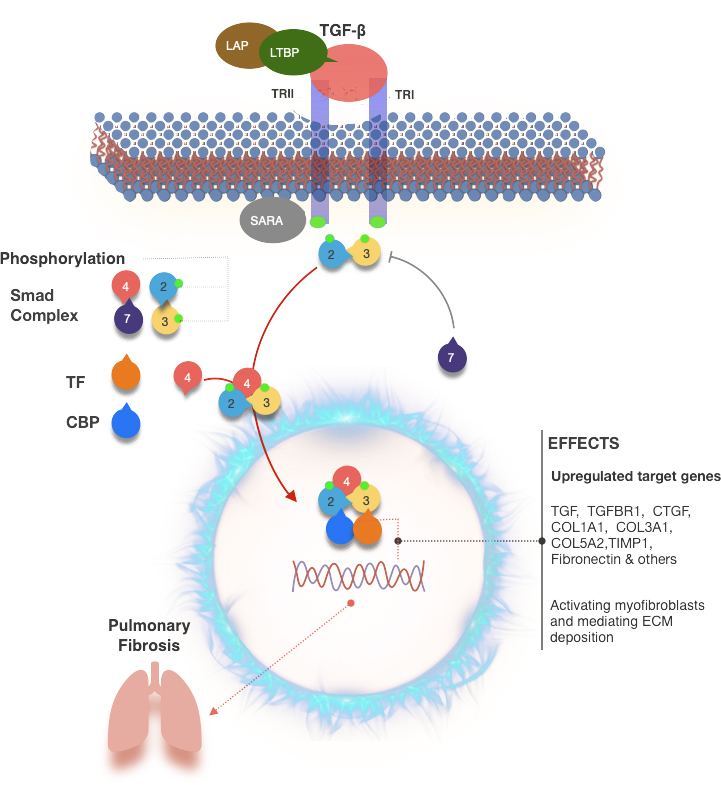Our Technology Successfully Treats The Effects Of FibrosisOur IP Is The Only Small Molecule SMAD3 Therapeutic in Development
Phosphorylated TGF-β2 forms a heterotrimeric complex with TGF-β1 and SARA. SMAD4 subsequently combines with phosphorylated SMAD2/3 to form an active heterotrimer complex and then enter the nucleus. The complex then interacts with the DNA sequence‐specific binding sites transcription factor (TF), and CREB binding protein (CBP) at the promoter.
These activation signals provoke fibrosis by up-regulation of fibrosis‐related gene (COL1A1, COL3A1, TIMP1) expression, and mediated extracellular matrix deposition, including TGF‐β1, type I receptors of TGF‐β; TGF‐β2, and type II receptors of TGF‐β.
Common examples of the process is visible when inflammation may overstimulate the lung after SARS‐CoV‐2 and similar pulmonary infections, which resul in fibrosis. The process begins as TGF‐β dissociates from the latency‐associated peptides (LAP)/ latent TGF‐ β‐binding proteins (LTBP) complex and binds to the TGF-β2 on the cell membrane. An inhibitor which can counter these effects has high therapeutic value.

